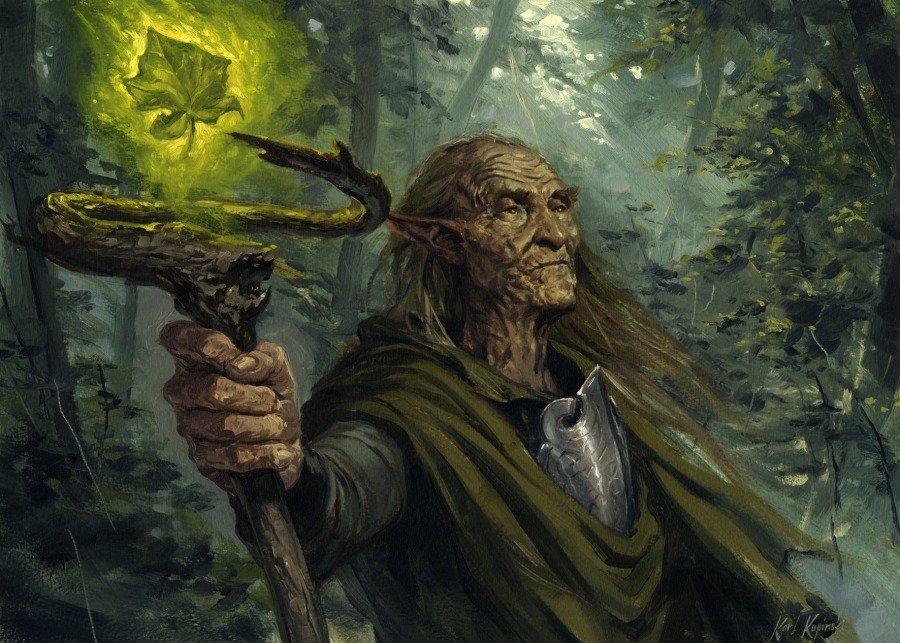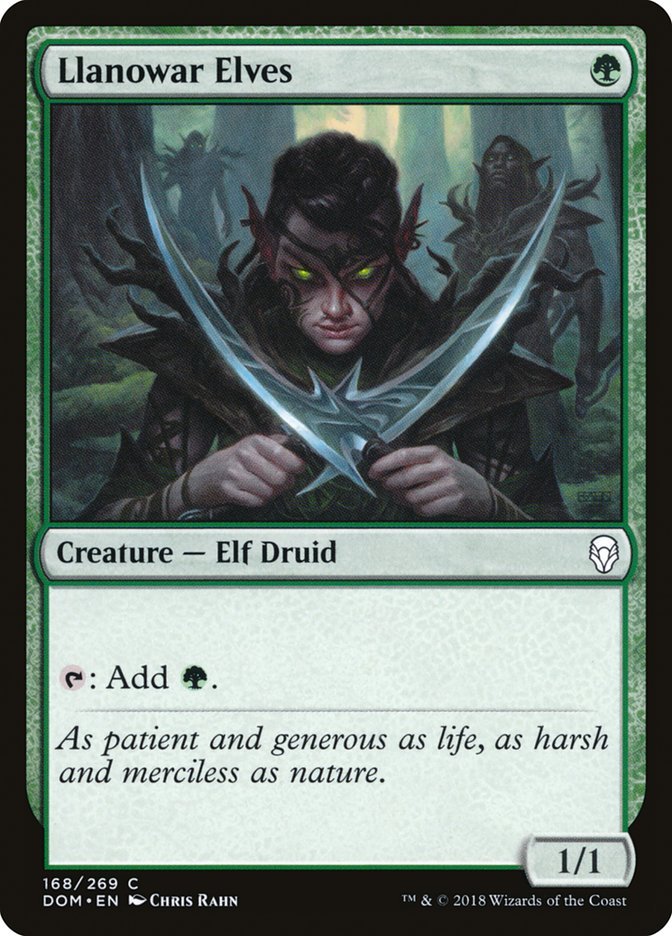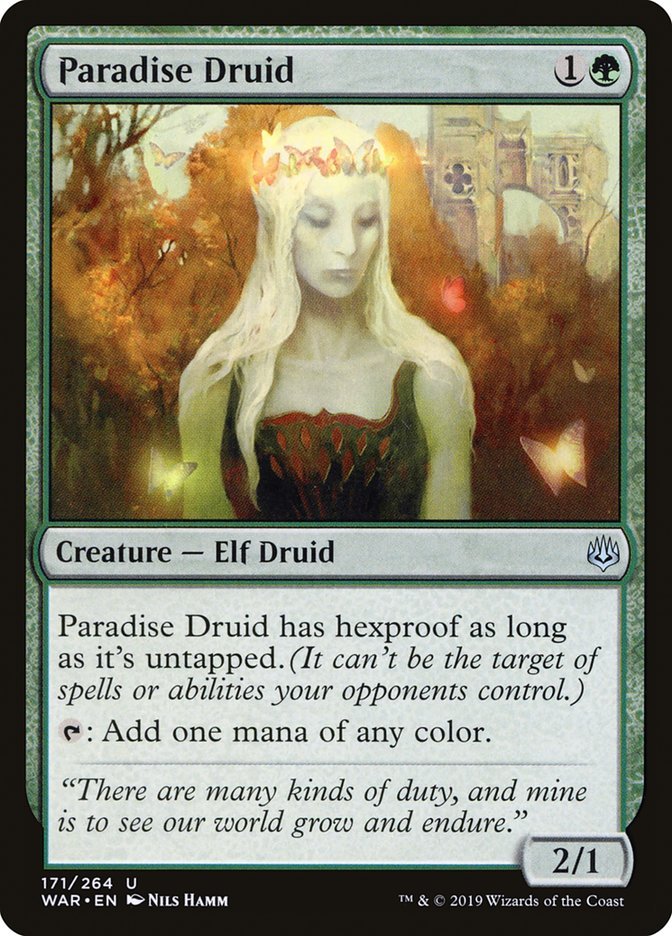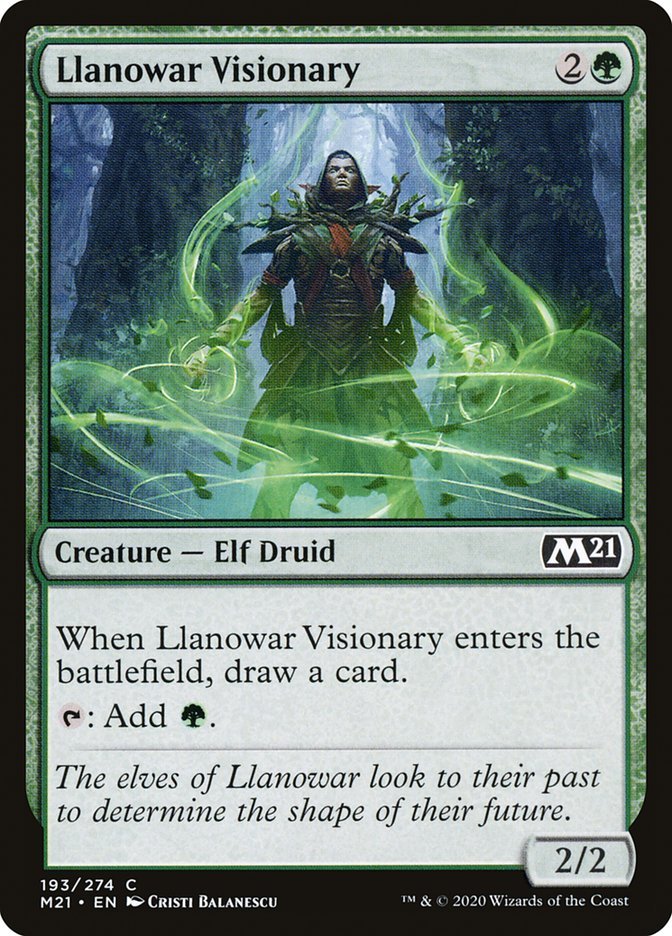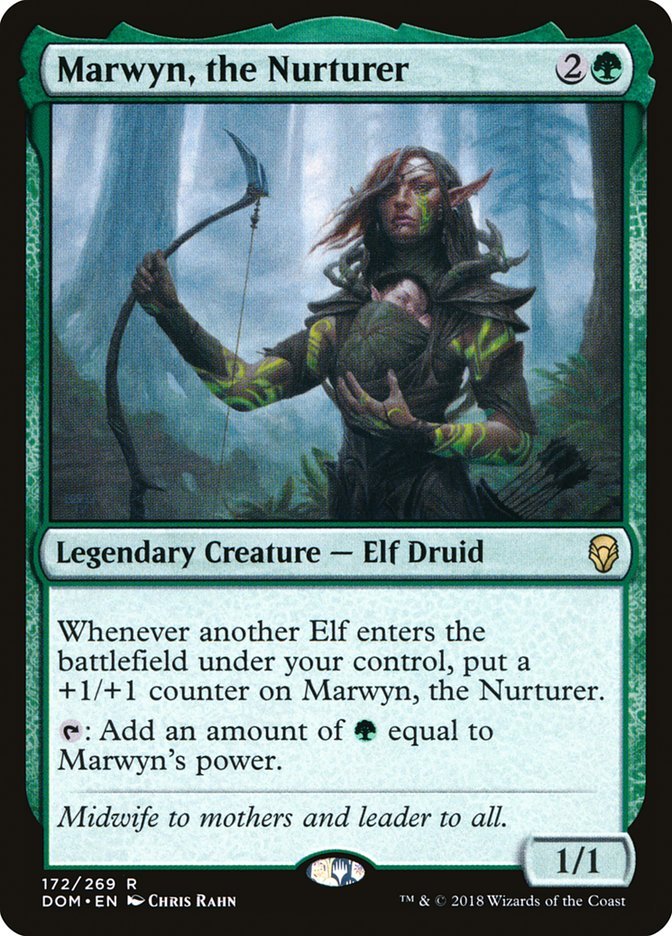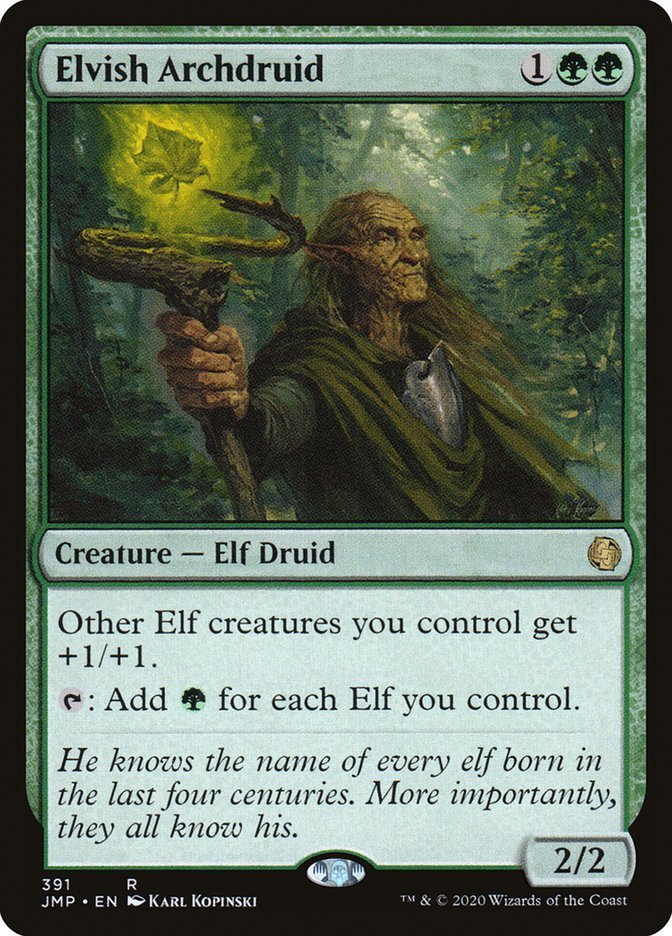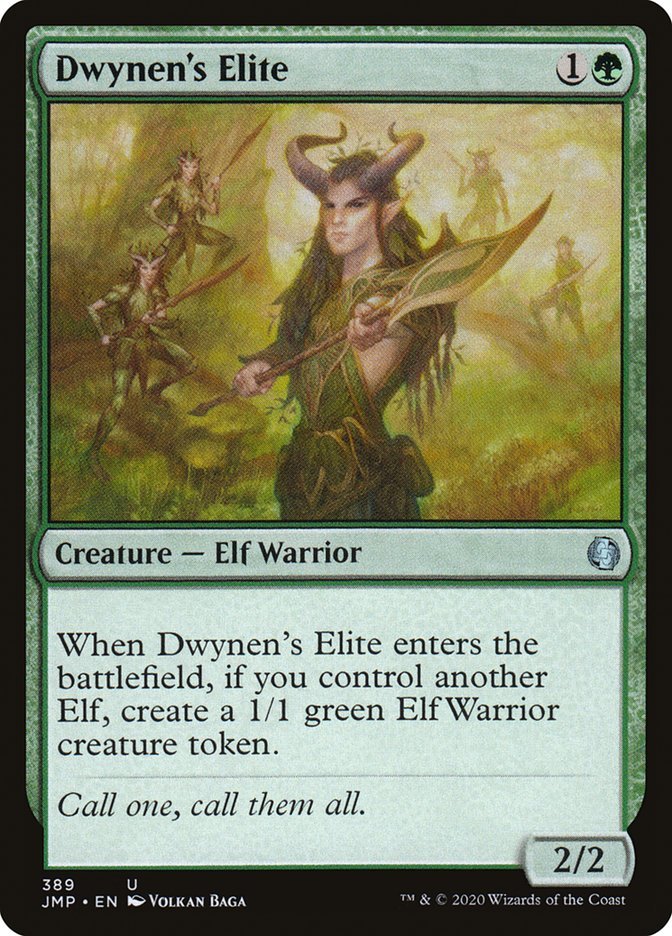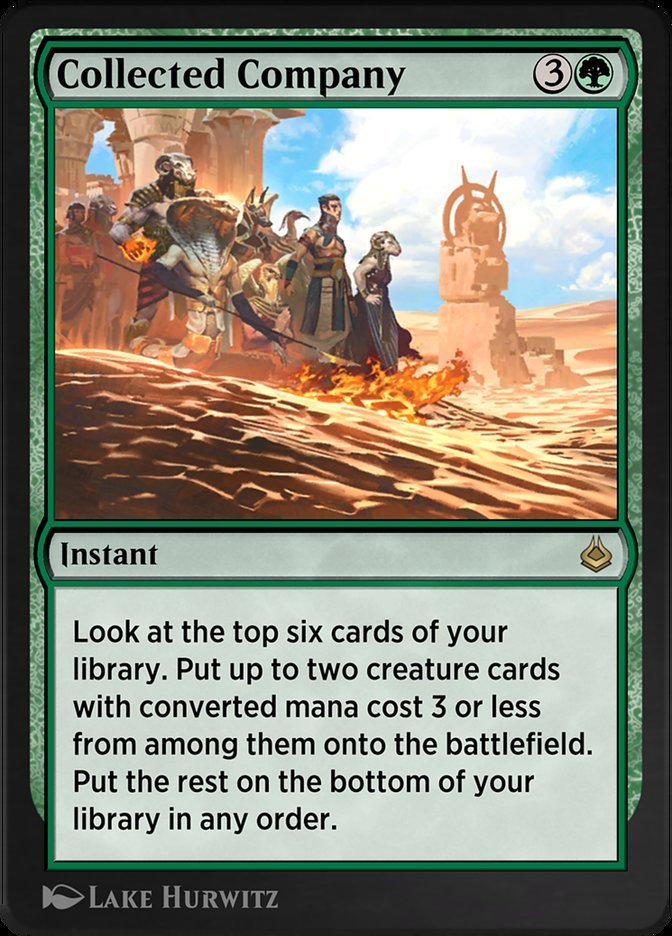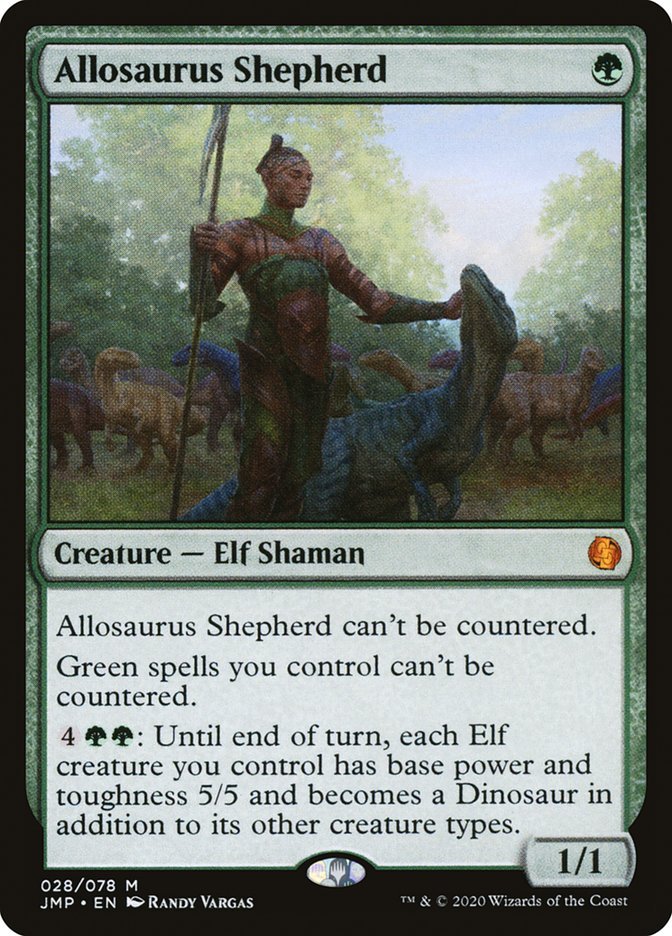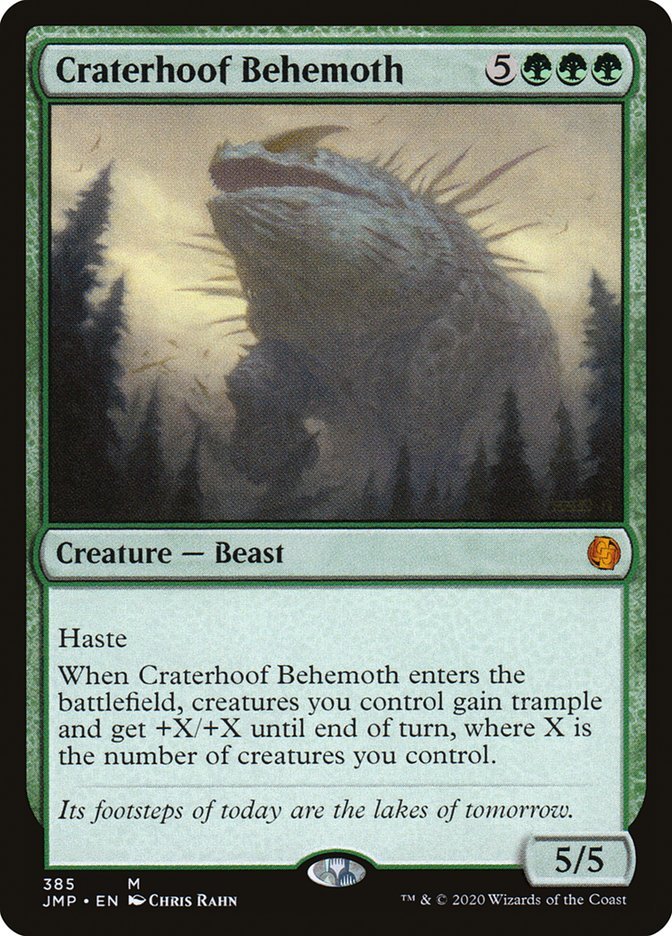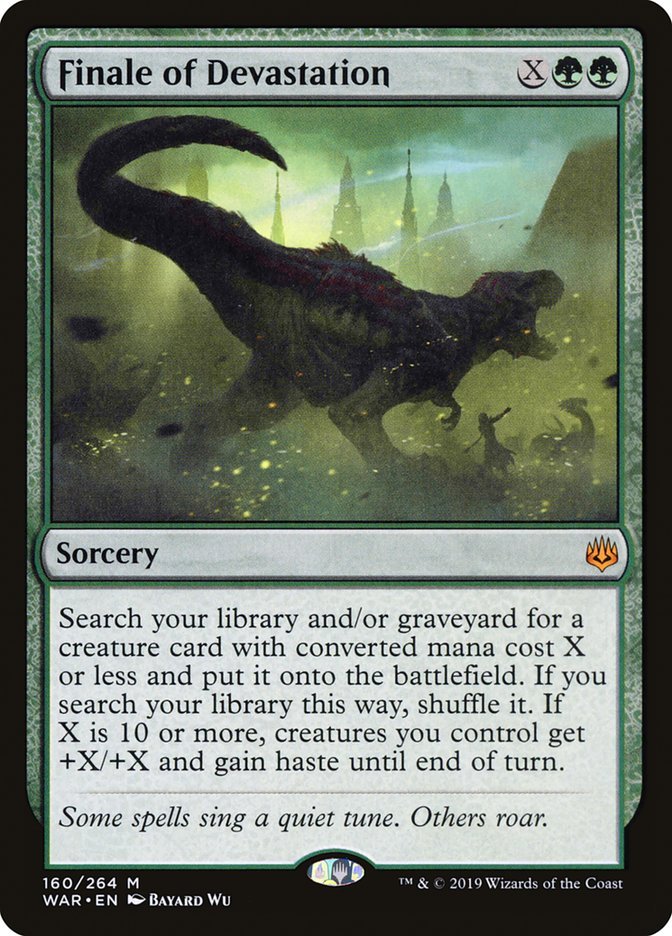Welcome to Elves All The Way Down, the quasi-fortnightly Magic: The Gathering Stream/Video/Article series where we try to play the best tribe in Magic in as many formats as possible. “What is that tribe?” I hear you ask, as if the title hadn’t already given the game away. Well, my dear reader, that tribe is Elves.
The Elf creature type has always fascinated me as a Magic player. Within Magic, Elves fulfil the role of Green’s ‘characteristic creature type’, but beyond that categorisation, they have one of the strongest mechanical identities of any creature type in the game.
Elves make mana.
Lots of mana.
Once you’ve got lots of mana, it’s somewhat trivial to win the game. Craterhoof Behemoth? That’ll do it. Activate Ezuri, Renegade Leader a bunch of times? That’ll do it too. Cast Finale of Devastation for an X of ten? That’s a lot.
As this series progresses, we’ll tackle a wide swathe of Magic formats, tuning and adapting our Elf decks over time as we revisit formats. On that note, for this Episode, we’re starting in…
Historic
The non-rotating format designed specifically for play on Magic Arena was originally devoid of an Elf deck, but Wizards of the Coast printed a few Elf pieces into the format via the Historic Anthology sets. Then came Jumpstart, a product about mashing together different themes, where Elves were lucky enough to get some new toys. We gained the shiny new Allosaurus Shepherd and had Elvish Archdruid and Craterhoof Behemoth added to the format (both of which are staples of Elf decks in other formats). Finally, Amonkhet Remastered provided the cherry on top – it added Collected Company to the format.
So, where does that leave us? Well, here’s the deck we’ll be starting with for Historic:
Historic Elves 1.0
| Creatures (32) 2 Allosaurus Shepherd 4 Llanowar Elves 4 Dwynen’s Elite 4 Elvish Visionary 4 Paradise Druid 4 Llanowar Visionary 4 Marwyn, the Nurturer 1 Reclamation Sage 4 Elvish Archdruid 1 Craterhoof Behemoth Instants and Sorceries (8) 4 Collected Company 4 Finale of Devastation Land (20) 4 Castle Garenbrig 16 Forest | Sideboard (15) 2 Allosaurus Shepherd 2 Heroic Intervention 1 Scavenging Ooze 2 Lead the Stampede 1 Loaming Shaman 1 Reclamation Sage 2 Setessan Petitioner 2 Sporeweb Weaver 2 Primal Might |
This deck is my own take on some Elf lists I’ve seen floating around. Some player prefer to take a more aggressive slant on the deck. They tend to include big beaters like Steel Leaf Champion and more lord effects in Elvish Clancaller. I’m sure we’ll try that version out at some point, but for now we are sticking to what Elves do best. [Editor’s Note: He’s talking about making mana again.]
The decklist falls into a few main categories:
Mana
The selection of mana-dorks in Historic isn’t ideal, but we can make do. We have the original ‘mana elf’ in Llanowar Elves, which is secretly the best card in the deck. The Modern Elves staple, Elvish Archdruid provides us with large amounts of mana from one creature and pumps our whole team for when we want to get aggressive. To supplement these two, we have Marwyn, the Nurturer, who is doing a good impression of being Archdruid copies 5 through 8 and Paradise Druid as a resilient 2-drop mana-dork. If Historic ever gets another 1-drop mana elf, such as Elvish Mystic or Fyndhorn Elves, Paradise Druid will be the first to step down. Finally, we have Llanowar Visionary, which is the combination of my favourite elf (Elvish Visionary) and Llanowar Elves.
Multi-Elves
Now, a lot of the cards we play care a lot about the number of Elves (or creatures) we control. To help prop up these counts, we play two cards that can put two Elves into play at the cost of one card. That’s almost like card advantage or something, whatever that is.
Collected Company also has the additional benefit of being an Instant, which allows us to play around countermagic and boardwipes by playing on our opponent’s turn.
Win Conditions
While playing a bunch of Elves and making a big Marwyn or pumping them all with an Archdruid can lead to some wins, we have a few cards that can really push things over the edge. All three of these cardstake the large number of Elves we’re playing and directly convert them into our opponent being dead.
Allosaurus Shepherd and Finale of Devastation provide additional utility in beating countermagic and tutoring for specific cards, whereas Craterhoof Behemoth just straight up kills people.
Sideboard
The sideboard for the deck is currently a work-in-progress. Hopefully we’ll get a better feel for it after we’ve played some games with the deck and seen what the Historic metagame looks like.
I’ve included some general purpose answers to things like board wipes (Heroic Intervention and Lead the Stampede), graveyard strategies (Loaming Shaman and Scavenging Ooze) and aggressive decks (Primal Might and Setessan Petitioner). We’ll see how well I’ve covered our bases against different archetypes during our games.
The Games
So, how did we do? I’d say pretty well, overall. We achieved 5 wins over 7 matches with our only two losses being to the same deck: Blue-White Control. I’m a little disappointed that we didn’t come across any Goblin decks, seeing as people are talking about it being the boogeyman of the format at the moment and I think we have a real chance to compete against them in terms of speed. (I’d also rank our little red friends as the second best tribe in Magic after our Elves).
Grixis Control
Two of our matches were against Grixis Control, which we managed to do much better against compared to Blue-White. I’d put this down to a few factors. For starters, the Grixis board wipes could sometimes be beaten by making our creatures too big, rather than relying entirely on our sideboarded Heroic Interventions. There were situations where an activation of Allosaurus Shepherd would save us from an Anger of the Gods or our Marwyn was too big for Hour of Devastation. Furthermore, the Grixis decks lacked Teferi, Hero of Dominaria, a card that could seal the deal after a boardwipe, and Settle the Wreckage, which is probably the best ‘board wipe’ against us because it beats Craterhoof.
Grixis Pyromancer and Gruul Aggro
We were able to outmatch other more board-state oriented decks, like Grixis Pyromancer and Gruul Aggro, by generally outclassing them in board presence and synergy. Our game loss to Gruul came as our opponent removed a key elf, presenting a very fast clock while we stumbled to rebuild. I generally consider these to be good matchups and, as long as we respect how fast they can be, we don’t need to change the deck too much to deal with them.
Breach Combo
Fortunately for us, the one time we faced a combo deck, we were able to present a fast enough clock before they could assemble their combo in game one. This meant that our sideboard cards only had to pull their weight in one other game. This particular match-up would benefit greatly from more graveyard hate, but Scavenging Ooze did enough this time round to power us through. I don’t want to focus too much on this specific combo deck as there are many variations on the combo archetype that we can face and we need to be able to compete with them all.
Blue-White Control
Blue-White Control presented a near-insurmountable number of answers to what we’re trying to do. We really could do with a second one-mana mana-dork to help speed up the deck so that we can have a board presence AND an answer by the time they’re casting boardwipes. Furthermore, we can consider adding white mana to our deck so that we can run Shalai, Voice of Plenty in the sideboard as a silver bullet against Settle the Wreckage. Finale of Devastation gives us the ability to run a single copy of cards like Shalai and still reliably find them when needed.
White mana can also give us access to better graveyard hate in Rest in Peace and a bunch of additional silver bullets like Aven Mindcensor, Thalia, Guardian of Thraben and Containment Priest. This greatly improves our sideboard while also giving us the chance to try out some hidden gems like Huatli, Radiant Champion if we want to try and go even bigger than before.
The deck held up extremely well, however the exact numbers of cards can almost certainly be tweaked to make the deck run more smoothly.
Next Time
I’m excited to see how Zendikar Rising can help the deck. Next time we come back to Historic, we’ll be trying out Turntimber Symbiosis // Turntimber, Serpentine Wood as a way of dropping our land count while increasing our chances of finding Craterhoof Behemoth. We’ll also be testing out the white sideboard plan, with new silver bullets Yasharn, Implacable Earth and Archon of Emeria helped along by the perfect new MDFC (Modal Double Faced Card) land, Branchloft Pathway // Boulderloft Pathway. We’ll also try out the more aggro version of elves at some point and see how that competes with the field.
However, we’re going to step away from Historic for a few weeks. Next time, we’ll be playing some GW Combo Elves in Modern and finding out what’s happened to the format in the last year. Join us then to see how often we can go infinite and make some arbitrarily large elves.
Jamie is a MtG and assorted gaming enthusiast who wants to bring his enjoyment and passion for games to everyone.
